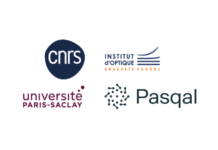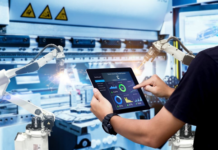
Alongside augmented reality (AR) and virtual reality (VR), artificial intelligence (AI) has established a new industry revolution. These technologies are credited with developing groundbreaking innovations that have transformed daily life as we know it.
However, with modern technical progress comes a horde of major ethical problems in its implementation.
Concerns about proper technological development and application stem from AI bias issues in addition to AR privacy violations and the psychological effects of VR on users. Rushed decision-making about these technologies without proper ethical evaluation by companies leads to harm with massive negative consequences such as the spread of misinformation, improper data utilization, and the creation of deepfakes.
This is why companies must develop and deploy these technologies ethically.
Building Ethical AI, AR, and VR Systems
The debate of ethics when it comes to new technologies has been raging over the past few years and it doesn’t seem like it will die out anytime soon.
Looking at AI algorithms, the main ethical concern with them stems from biased data, which produces discriminatory conclusions during decisions. Developers need to implement three mitigation strategies for these risks: training models with diverse datasets, maintaining constant model auditing, and implementing bias detection tools. This can help minimize and even eliminate several of the ethical concerns that come with AI implementation.
A great example of this is the launch of Shutterstock’s ethical generative 3D API. This generative API was trained exclusively on Shutterstock content and consists of only licensed data, ensuring fair compensation for original creators and even giving them the option to opt out of the training of the AI model.
The protection of privacy stands as a foremost concern when AR solutions collect and manage operational environmental data. Organizations need to deploy rigorous data protection systems that combine anonymous data processing and encrypted information with user authorization procedures. Reliable policies about data usage promote both trust development and security measures for sensitive data protection. A responsible tech innovation culture develops when organizations establish internal review boards to follow both industry standards.
Implement the Ethics in Development
The ethical development of technology requires a focus on implementation beyond the designing phase. Organizations also need to prioritize user acceptance by providing a complete understanding of data collection and utilization procedures. When privacy policies are transparent and users need to explicitly affirm their consent, the result is greater trust in system security.
At the World Telecommunication Standardization Assembly, policy-makers, industry leaders, and tech experts gathered to emphasize the need for ethical AI, the critical importance of consensus, and how digital inclusion can make a meaningful difference in people’s lives.
This emphasis centers around the need for ethical principles to be at the heart of data collection strategies when developing new technology. To achieve ethical development and implementation of AI, AR, and VR technologies, developers must adhere to proactive principles that advocate for fairness and transparency while also maintaining accountability throughout the process.
With all the skepticism surrounding AI and the number of calls advocating for regulating AI systems, ethical AI has become a need instead of an option. This means that organizations need to go past basic regulatory compliance by actively working to collect data that is only strictly necessary. AR and VR developers need to build programs with human wellbeing at the forefront especially when users enter experiences that affect their mental state like VR simulations and virtual gaming.
The development of ethical AI requires organizations to stand by fairness standards and transparent operation procedures and maintain full responsibility. Such values embedded into the development lifecycle allow companies to create a responsible digital future.
Harnessing Innovation for Positive Impact
AI, AR, and VR all demonstrate great potential for pursuing social good despite existing ethical challenges. Applications that use AI help boost accessibility while simultaneously advancing educational opportunities and maximizing sustainability results. AI-driven tools also enable people with disabilities to use them for better public space navigation.
The healthcare industry has long benefited from the advent of new and innovative technologies. With AI revolutionizing medicine, the field has taken leaps forward. AR overlays provide real-time surgical assistance to doctors while VR therapies effectively treat PTSD together with anxiety disorders. VR simulations offer comprehensive training at workplaces to minimize risks in dangerous work areas.
Likewise, when analyzing financial organizations, cybersecurity protection is needed as their primary defense against digital threats. Procedures for building cybersecurity awareness, along with strategic risk management, function as important elements for blocking data breaches and cyberattacks. Organizations need to protect their user data while creating security protocols that minimize unethical and malicious technology usage. The integration of cybersecurity standards allows companies to create trustworthy advancements that offer secure outcomes.
Conclusion: A Call for Responsible Innovation
These technologies are advancing at a rapid speed, but they come with both social benefits and ethical concerns that are hard to keep up with. The benefit of these technologies toward society requires developers and businesses to focus on moral values in their decision-making processes. Every advancement in technological development requires a collaborative effort between developers companies and policymakers to build regulatory systems that protect the ethical use of AI, AR, and VR. Responsible industry leaders must adopt ethical design practices and ensure transparency to make way for an equal and secure technological future.
















